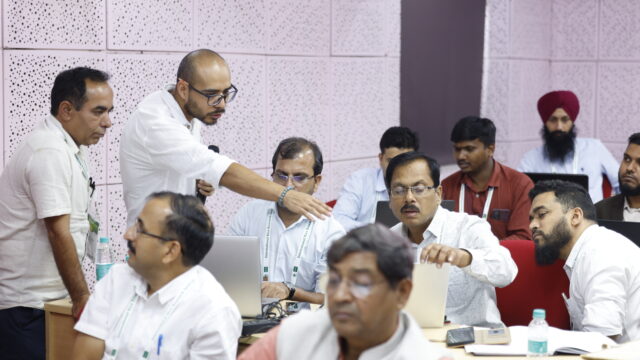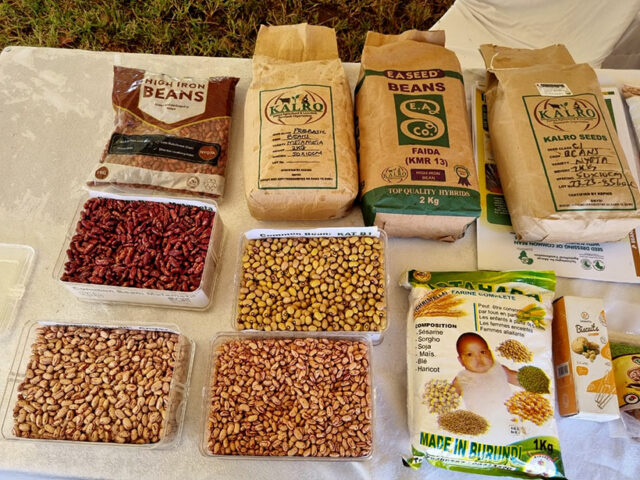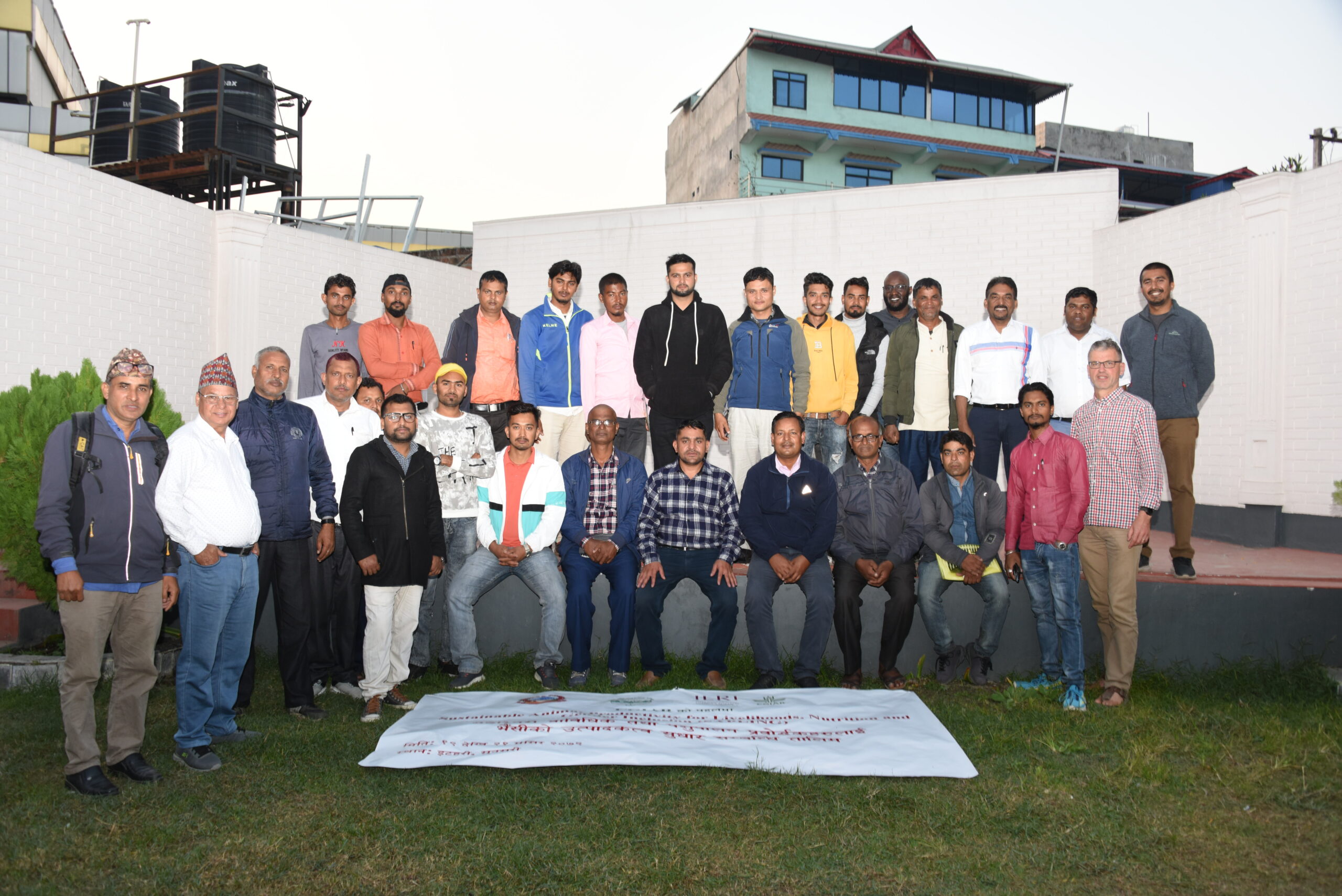
In Saptari, Nepal, one family’s greatest challenges in keeping buffalo are low market prices and mastitis, an infection in the udder that reduces milk yield. Down the road is the only dairy cooperative in the area. Serving 620 farmers, this cooperative buys and sells milk but cannot provide adequate health and feed services to farmers. Saptari is one of the districts where CGIAR’s Sustainable Animal Productivity for Livelihoods, Nutrition and Gender Inclusion (SAPLING) initiative has begun implementing SAPLING Bhaisi (meaning buffalo in the Nepali language) with the International Livestock Research Institute (ILRI) to reconcile low buffalo productivity and uncompetitive markets in rural Nepal. By 2032, SAPLING hopes to achieve sustainable, competitive, inclusive and resilient buffalo value chains drive improved livelihoods, enhanced food and nutritional security and promote equitable growth of men and women.
One reason buffalo keepers experience limited livelihood opportunities due to low economic and non-economic benefits is the lack of access to livestock inputs and services in rural Nepal. Lack of access puts a constraint on improving livestock production and adds to the workload of women who are tasked with collecting fodder and bringing animals to vaccination centres. Since launching in March 2022, SAPLING Bhaisi has been establishing an integrated approach to solve limited access to services by capacitating a non-official network of extension workers.
SAPLING Bhaisi has partnered ILRI with the Nepal Agricultural Research Council, rural municipalities and rural dairy cooperatives to reimagine cooperatives as a service provider. Dairy cooperatives are already crucial parts of the dairy value chain but currently do not provide farmers with any services other than buying and selling milk. To increase the capacity of rural dairy cooperatives, cooperatives will host SAPLING Bhaisi’s non-official network of extension workers. Cooperatives and their local governments participating in the SAPLING project have already jointly appointed trained junior technical assistants as Village Livestock Promoters (VLPs), extension workers trained as multiple service providers. VLPs will connect farmers to input suppliers and facilitate complementary innovations in a business mode.
To aid VLPs in their extension work, ILRI and local and national stakeholders have developed a technology bundling approach that groups different technologies (breed, feed, health) for the SAPLING project. For example, one of the reasons for low economic benefits from buffalo rearing is low productivity. When addressing low productivity, digital tools can collect data on factors like nutrition, health and genetics that will provide VLPs specific advice to give farmers on breeding and fertility.
From 5 December to 8 December 2022, various VLPs, veterinarians and other buffalo value chain actors attended field trainings and feedback sessions on the various tools for data collection on feed and animal health and provided advisory support. Megharaj Basnet, a junior technical assistant from Barahakshetra municipality, described how the training would support his role as VLP:
“By using these applications, I can give correct advice to the farmers based on the local context, which would increase the trust between technicians and the farmers.”
The bundled technologies enable VLPs to be a link between the farmer and the cooperative. Using the tools to input, VLPs are given specialised information to share with the farmer on improving buffalo productivity. In a positive feedback loop, cooperatives will want to support VLPs in their data collection and advisory support to farmers because increased buffalo productivity will increase milk production.
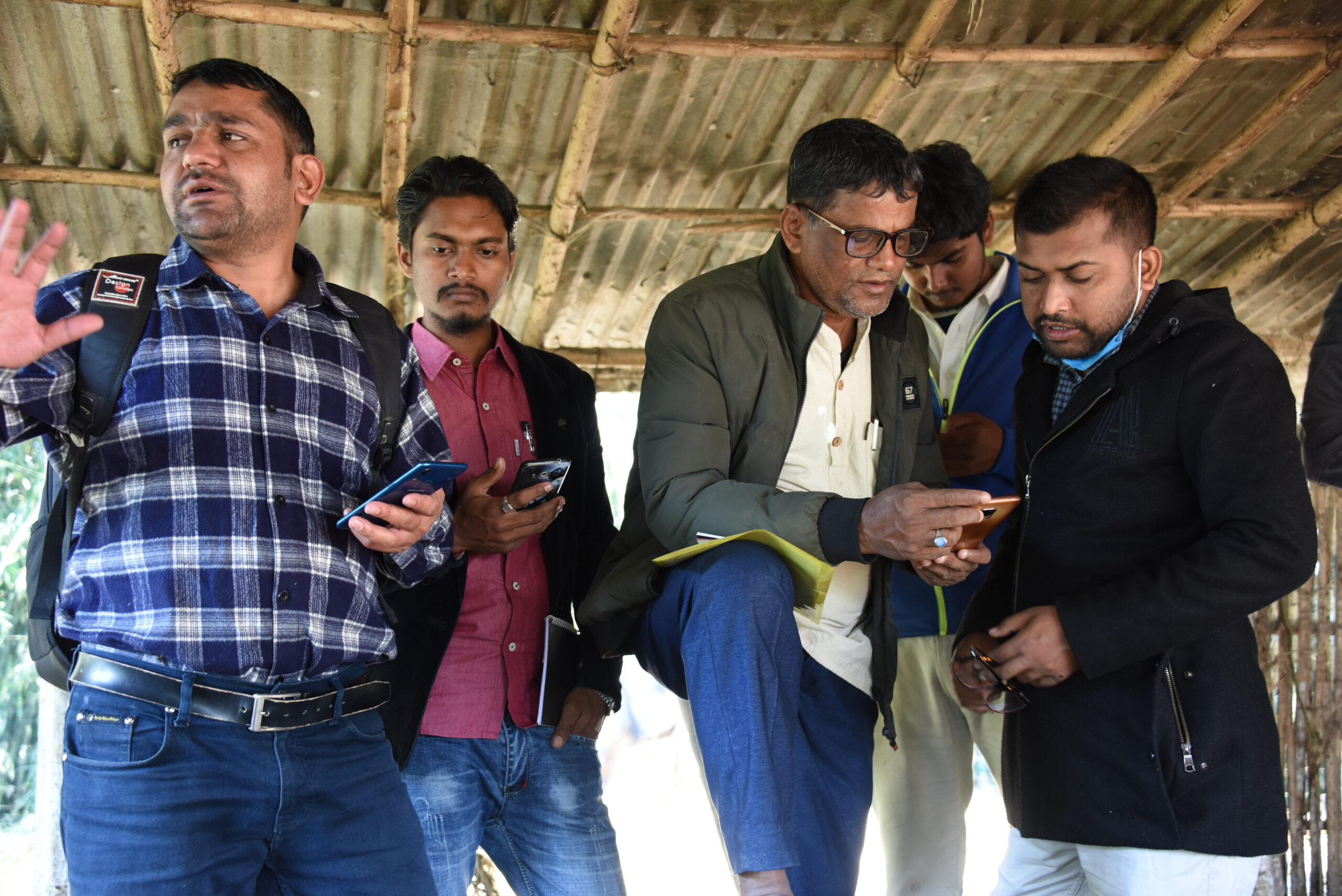
On 10 December 2022, ILRI organised a pilot fertility management camp in Itahari, Nepal, that displayed how VLPS can collaborate with different value chain actors to collect data and provide health services to farmers. In two separate locations, buffalo keepers, primarily women, brought their buffaloes to a makeshift hold where a veterinarian examined their animals. Infertile buffaloes were treated with hormone injections, and farmers were advised on feed management to improve buffalo nutrition. During the examination, the VLP was simultaneously asking farmers questions, using a phone app to record their answers to the tool. Data like the farmer’s name, address, the age of the buffalo and examination results were collected. (In the future, ID tags will be used to search the animal’s medical history.) Following the examinations, VLPs would perform house visits for follow-up.
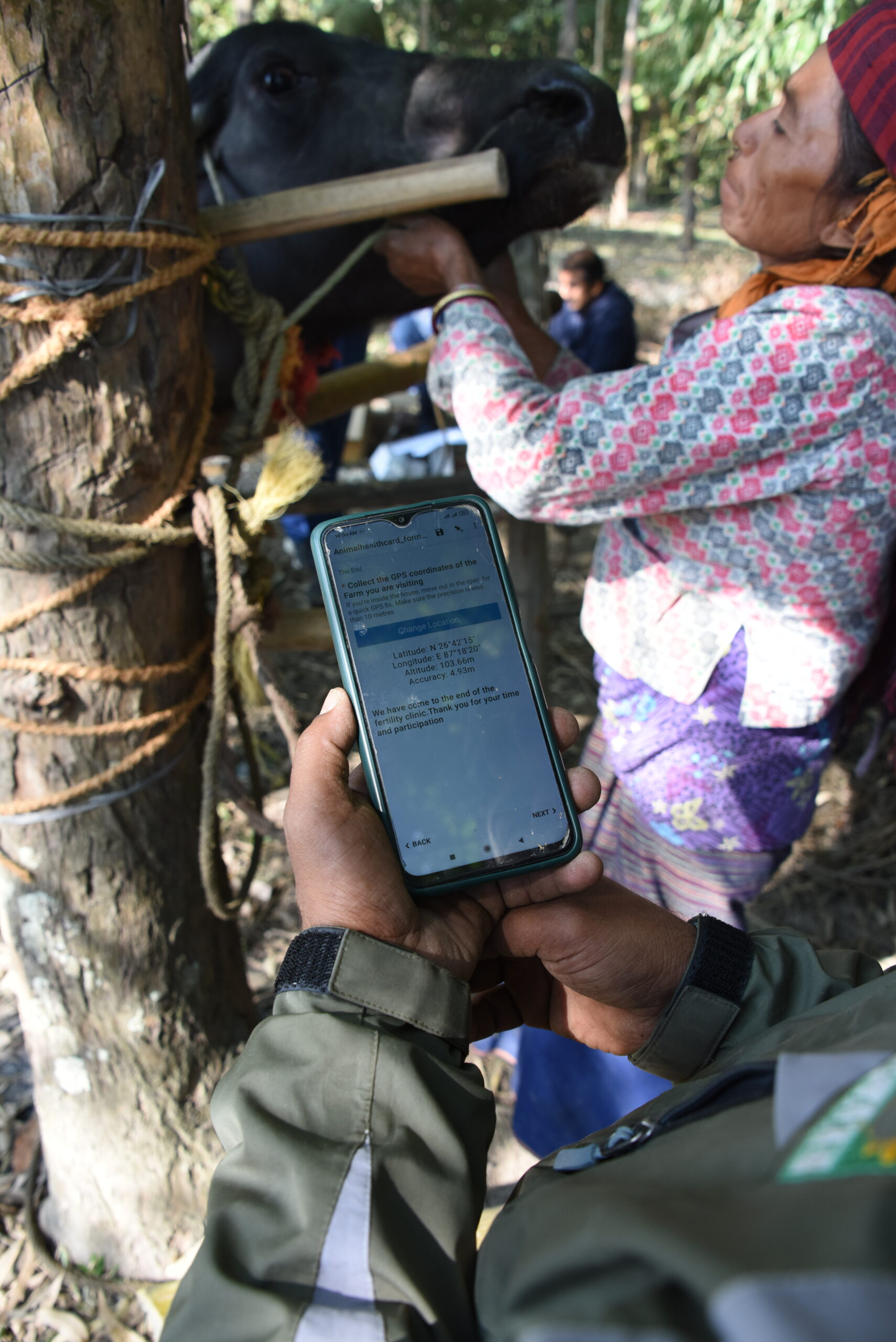
For most buffalo farmers, this was the first fertility clinic they attended. One woman said that a cooperative member had told her to bring her buffalo to the clinic because her animal had difficulties breeding. When asked whether they thought the fertility camp was helpful, another woman answered:
“Keeping a buffalo is expensive. When a buffalo can’t produce a calf, we have to sell it and lose money. These kinds of camps will help manage these fertility problems to minimise the loss.”
The activity’s success relies heavily on the data collected from the farmers and knowledge sharing of how farmers can utilise their own data. Future camps must amplify the role of the VLP to ensure that farmers understand the veterinary treatments their buffaloes are receiving and the activities they must do at home to improve buffalo productivity. For example, if a VLP records that a buffalo cannot conceive because the animal is malnourished, the VLP must educate the farmer on feed improvement.
Sustainable integration of SAPLING Bhaisi into the dairy value chain will depend on VLPs serving as a conduit between dairy cooperatives, veterinarians and farmers to promote buffalo productivity for Nepali smallholder farmers.
Written by Madeline Wong, ILRI. Photos by ILRI / Nils Teufel


